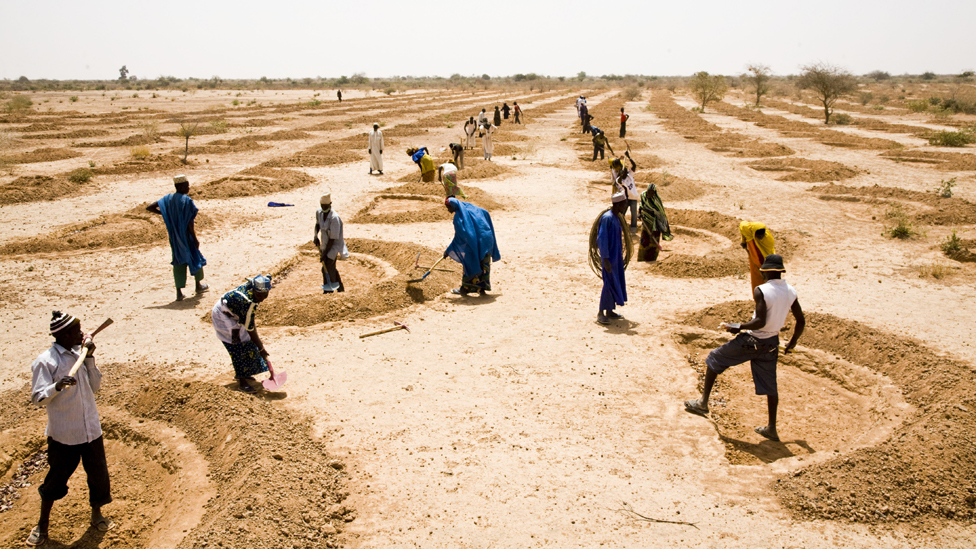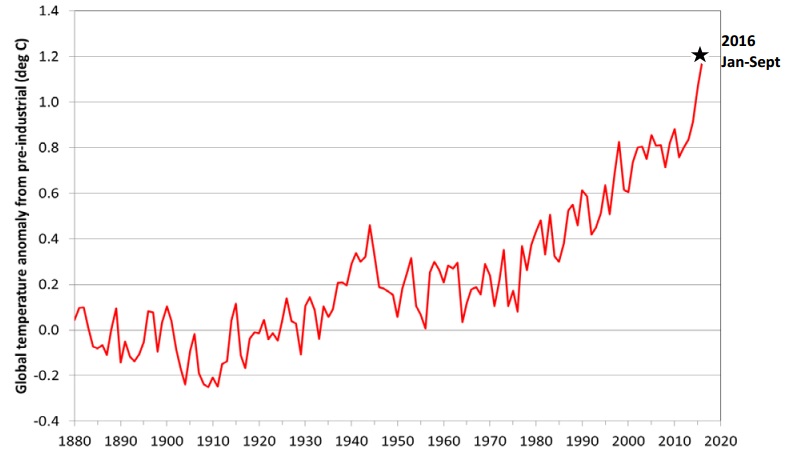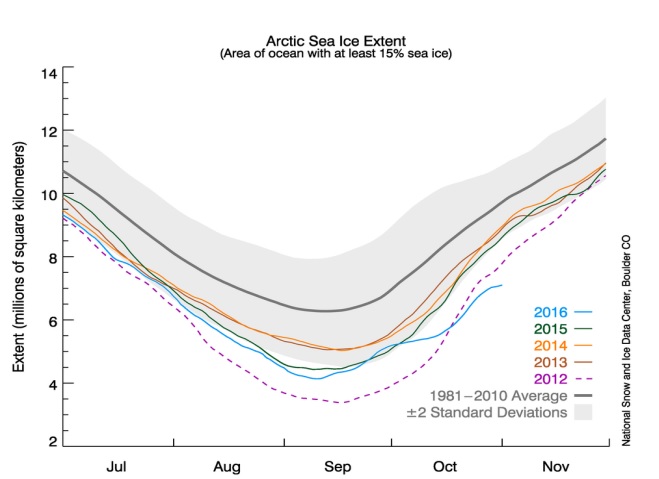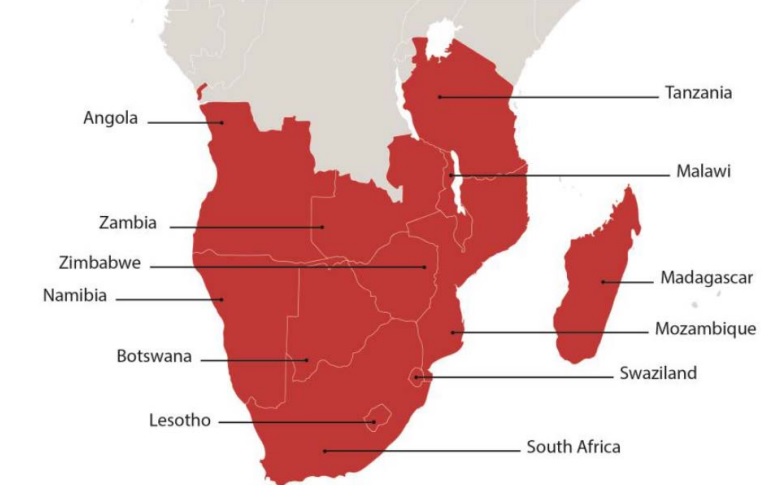2016 is the hottest year in history.

According to forecasts of the World Meteorological Organization (PTO) , 2016 may be the hottest year in history. Global temperature broke the 2015 record. According to preliminary data, in 2016 the temperature is 1.2 degrees Celsius above the pre-industrial level. WMO draws our attention to climate events, natural anomalies and cataclysms that affected our planet in 2016.
Air temperature rise
In January-September 2016, the average temperature throughout the world turned out to be about 1.2 degrees higher than the pre-industrial level and 0.88 degrees higher than the average temperature during the reporting period 1961-1990. So far, everyone is guided by the meteorological indicators of this particular period: then, compared to the previous period, the average temperature for the year on Earth has increased.

Global temperature change from the pre-industrial period to the present day
')
It was especially warm in the first months of 2016: record anomalies of +1.12 degrees in February and +1.09 degrees in March. Repeated analysis also indicates that in October, abnormally high temperatures are similar to those from May to September.

Graph of anomalies of average temperatures 1880-2016
In the vast majority of regions, the temperature was above the average for 1961-1990. In some northern regions of Russia, around the mouth of the Ob River and Novaya Zemlya is warmer by 6-7 degrees, in the Arctic and subarctic regions of Russia, in Alaska and northwestern Canada - by 3 degrees. If you look at the whole of the Northern Hemisphere, here the temperature has increased by 1 degree. Warming up occurs in the southern hemisphere at less extreme rates, although in some regions located outside the tropics — South America, northern and eastern Australia, and most of southern Africa — this figure still exceeds 1 degree.

Temperature anomalies around the world (January-September 2016)
The only relatively large area of the Earth that was hardly affected by anomalous warming is northern and central Argentina, part of Paraguay and the lowlands of Bolivia. Here temperatures are below average.
Rising sea levels and melting Arctic ice
Together with the land, the world ocean is getting warmer: in most of its sections, the temperature is above normal. This has led to coral bleaching and disruption of marine ecosystems in tropical waters. Among the victims are the Great Barrier Reef off the east coast of Australia and the Pacific island countries of Fiji and Kiribati. In some areas of the Great Barrier Reef, up to 50% of corals have died. The temperature below the norm for 1 degree or more can be observed in the waters of the Southern Ocean . This is especially noticeable around the Drake Strait between South America and Antarctica.
The natural phenomenon of El Nino reflected in the level of the oceans in November 2014 - February 2016. During this time, the water level rose by about 15 millimeters. After 1993, scientists observed an annual water rise of 3-3.5 millimeters, but the values of 2016 reached new record highs.

Ice cover area
Arctic ice continues to melt rapidly. The area of ice in September reached a seasonal minimum - 4.14 million km 2 . Since 2007, this is the second such low figure. Winter maximum in March was the lowest in history. Autumn frost was also much slower than usual. The length of sea ice at the end of October is also a record low for this time of year.
Increasing the concentration of greenhouse gases in the atmosphere
The average annual concentration of carbon dioxide for the first time reached 400 parts per million units of volume (ppmv) in 2015. According to preliminary data, we can expect a new record in 2016. As an example, researchers cite the situation at Cape Grim in Australia. Here, the level of CO 2 in August 2015 was 398.13 ppmv, and a year later, this figure rose to the level of 401.2 ppmv. A similar situation occurred on the island of Mauna Loa, where the eponymous active volcano is located. The average weekly concentration of carbon dioxide in October 2015 was 398.5 ppmv, and in October 2016 - already 402.07 ppmv. The highest monthly rate - 407.7 ppmv - was registered in May of this year.
Destructive natural phenomena
Numerous natural phenomena in 2016 had serious consequences for all mankind. The most significant in terms of the number of victims, PTO researchers consider Hurricane Matthew . According to the Government of Haiti in early November, as a result of the most powerful hurricane of the decade, 546 people died and 438 were injured. After Matthew walked through Haiti, traces of him were found in the north. He went further to Cuba and the Bahamas, and then reached the east coast of the United States. There, Hurricane Matthew provoked a flood off the coast of South Carolina.
Typhoon Layonrok (Typhoon Rinaldo) caused a devastating flood and led to dire consequences in Japan, North Korea and the Primorsky Territory of Russia. Cyclone Winston in Fiji became the most destructive in the history of the island nation. In 2016, a total of 78 tropical cyclones were recorded worldwide.
In the Yangtze River Basin , the most powerful summer floods were observed , killing 310 people and causing damage of $ 14 billion. Missing or missing 200 people from floods and landslides in Sri Lanka in mid-May. Hundreds of thousands of people evacuated. Seasonal rainfall, exceeding the norm in the Sahel , has led to significant flooding in the Niger Basin.

South African countries affected by drought 2015-2016
Throughout 2016, we observed a series of heat waves. The year began with an extreme drought in southern Africa, exacerbating an already long drought. Meteorological stations register new temperature records: on January 7, the temperature reached + 42.7 ° in Pretoria, + 38.9 ° in Johannesburg. Thailand set an internal national record on April 28 - the temperature rose to + 44.6 °. On May 19, a record of + 51 ° was registered in the Indian city of Phalodi.
Meteorologists set record or close to record temperatures in the countries of the Middle East and North Africa this summer. On July 21, a temperature of 54 degrees was recorded in Mitribach (Kuwait), and the next day a new record - 53.9 degrees - was set by Basra (Iraq).
The most devastating forest fire in Canadian history occurred in May in the city of Fort McMurray in Alberta. The fire destroyed 590 thousand hectares of forest and became the most costly natural disaster in Canada. Because of him had to completely evacuate the city. In the end, the fire destroyed about 2,400 city buildings and structures.
Implications and predictions
Annual and long-term changes in climate can exacerbate social, humanitarian and environmental pressure. Due to frequent and devastating natural disasters, conflicts due to reduced resources, as well as rising sea levels and flooding of the lowlands that make them uninhabitable, an increase in population migration is expected. According to the UN High Commissioner for Refugees , in 2015, 19.2 million movements related to weather, climate and geophysical risks were recorded in 113 countries. South and East Asia dominate in terms of the highest absolute figures, but no region of the world has remained unaffected. What statistics are waiting for us at the end of 2016 is not yet known.
Extreme weather conditions and climate change events influenced by 2015-2016 El Niño have had a significant negative impact on agriculture and food security. The latter has affected more than 60 million people worldwide.
It is expected that 2017 will be hot, but most likely there will be no new records this year. “El Nino is weakening, and we are not waiting for records from 2017. It will probably be warmer in the coming year than in any other year of the past two decades. This is mainly due to increasing concentrations of greenhouse gases, ”notes Dr. Peter Scott of the UK Meteorological Service.
However, another analysis presented at the UN summit in Morocco showed that after decades of steady growth, global carbon emissions have not increased significantly in the past three years. Scientists believe that the main reason for the overall stabilization of the situation is China, which has begun to burn less fossil coal.
WMO has published preliminary reports for 2016. A final statement is expected in early 2017.
Source: https://habr.com/ru/post/399175/
All Articles